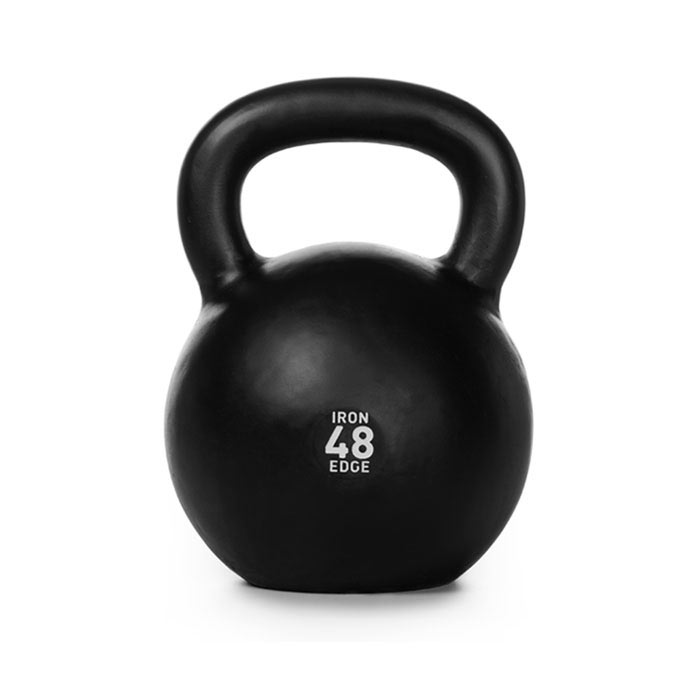“One reason kettlebells are very popular with the Russian Navy; there is nowhere to run around on a man-of-war but who needs to if there is a kettlebell around?”
– Pavel Tsatsouline

You need a kettlebell to survive the winter
If you live in a cold weather climate you’re going to miss a lot of days in the gym. Every year snow storms, black ice, and freezing temperatures sabotage millions of men around the country. Unless you’re going to walk through a blizzard to get to the gym, if it’s even open, you’ll probably be stuck at home.
And this isn’t just a Midwest thing, or just an East Coast issue. People from almost every state get hammered with bad weather. Unless you live in Florida or certain parts of the West Coast you’ll get snowed in at least once this year.

Missing the gym sucks. Especially if you’re trapped indoors all day. There’s only so much daytime television you can watch before getting restless.
While owning a home gym would be nice, it isn’t practical for most people. If you rent a place there’s a good chance that you won’t have the space for a weight rack and various benches. Even setting up a Power Tower (great product and worth every cent) might be a little difficult.
Enter the kettlebell
The problem with weight benches and fitness stations is that they take up way too much room. If you live with other people, or have a small apartment, filling the place with exercise equipment is out of the question.
However, there is still one tool that can give you a full-body workout without taking over your whole house.
The kettlebell is probably one of the most underrated tools out there. In my two years of gym experience, I’ve never seen someone using one of these. And I’ve lifted weights in multiple states and on two different continents. People will run out and buy stupid ab machines, but no one will take the time to learn about kettlebells.
If you’re unfamiliar with this piece of equipment, Pavel Tsatsouline provides some great background on it:
“The Russian kettlebell, which I teach to the Marines, SWAT teams and the nuclear-security teams of the Department of Energy. Kettlebells are like cannonballs with handles. They come in different sizes — 36 pounds, 54, 72 — and there will be smaller ones soon. They have been around for decades, used by the Soviet Union since the 1960s. They help you acquire body skills for doing a lot of things. If you do kettlebells, then you can improve whatever physical abilities you need.”
Elliott Hulse also has a great video on them and why you should, and shouldn’t, consider using these:
Personally, I’ve owned a kettlebell since the summer of 2012. While I didn’t use it every day, I would throw it around at least three times a week. This was before I started lifting weights and it kept me in decent physical condition. I wasn’t big or anything like that, but I had visible abs and was in better shape than most non gym goers. Playing with that kettlebell and doing some push-ups were my only form of exercise and they kept me from gaining a ton of weight.
What I like about the kettlebell is its versatility. This one tool can work your whole body. And while it isn’t as good, in my opinion, as actual weights, you’ll still get a great workout from it. When you’re snowed in, or otherwise unable to visit the gym, this will still work your muscles.
Why kettlebells are right for you
There’s a whole book called The Russian Kettlebell Challenge, by Pavel Tsatsouline, and it has over 200 pages of quality, and well researched, information about the benefits of this tool. I really can’t explain everything here, but I’l try to explain a few of the basic benefits:
- Explosive movements (great for fighting)
Kettlebells will help you to throw better punches. If you box, like me, you’ll be able to hit harder and more often. Exercising with kettlebells will allow you to build up better stamina in your shoulders. This keeps you from getting tired and throwing weak punches.
The average man, who doesn’t fight, will probably last about one round in the ring before getting winded. If you add some kettlebells to your routine and hit the punching bag, you’ll have better self-defense capabilities than 80% of the population.
- Builds shock resistance (which keeps injuries at bay)
Working with kettlebells will strengthen your tendons. I’m not an expert on tendon strength, but I know that damaging them is bad. If you play a sport that’s rough on your body, like wrestling or fighting, you may want to consider using kettlebells to strengthen your tendons. Once again, I’m no expert. Buy the book for Tsatsouline’s in-depth explanation.
- Improved hip and lower back flexibility
Kettlebell swings work your posterior chain. You are going to be developing a better back from this. While I like pull-ups and deadlifts, using a kettlebell is probably a safer option for men who are worried about back injuries. If you’re older, or have a weak back, kettlebell swings are most likely a better choice for you.
How to save money when buying a kettlebell
If you go to a sporting goods store you’ll usually find some 5-pound neon purple kettlebell that comes with a DVD. This is going to cost you about $30 and it won’t be much use.
If you go online, you’ll see giant 50-pound iron balls for $200. These probably aren’t going to be your best option, at first, either. Kettlebell exercises require you to preform high reps. Doing 20 to 50 swings in one set is normal. Using a super heavy ball will wear you down right away.
Personally, I bought a 25-Pound SPRI Deluxe Vinyl Kettlebell and it has served me well. Even doing 10 x 10 swings will wear you down quickly. Honestly, I doubt I could do 50-pound swings for more than a handful of reps.
People on a budget, or simply curious about kettlebells, can get by with a much cheaper tool.
The dumbbell is a fairly effective substitute and you can get most of the same benefits. Anyone who just wants to feel what a kettlebell exercise is like should take a dumbbell and do some swings and snatches with it.
If you like the feeling, invest in a kettlebell and keep it at home for those days when you can’t hit the gym.